Dignity

Public health professionals strive to bridge the gap between good intentions and good outcomes. Learning about public health will equip Christians to think on a systems level, to have evidence-based programs, champion accountability, and partner with people most affected to accomplish systemic change.

When I began my theological education, I encountered an even more disturbing reality: the presence of “texts of terror” as Hebrew scholar Phyllis Trible calls them. These heinous sexual crimes and acts of violence committed against women were captured right there, plain as day, in the holy book I treasured.
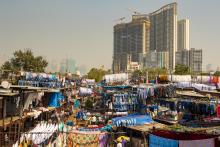
One could say dignity has three elements: Agency, that entails people being able to act autonomously and use their gifts and thrive; recognition, that provides a sense of value in the social communities that all people find themselves in; and implementation and institutionalization of that agency and recognition, to ensure dignity’s presence over time.

“I dream of sports as the practice of human dignity, turned into a vehicle of fraternity,” the pope says.
“Do we exercise together this prayer intention? That sports may be an opportunity for friendly encounters between people and may contribute to peace in the world.”

One of the principal goals of My Jesus Project, a yearlong effort to better understand what we mean when we talk about following Jesus, is to practice and embody right-heartedness, or what I call “orthopathy.” I believe that, though our beliefs — orthodoxy — and our actions — orthopraxy — are important, both are anemically informed and out of balance in a Christ-like life if the so-called heart work doesn’t come first, to inform the other two.
Some of which I saw when reading prominent voices within the Southern Baptist Convention criticize Rev. Dr. Fred Craddock, known as one of the most influential voices in preaching in the past century, before his body was even in the ground. Craddock, who was 86 and had struggled with Parkinsons for a long time, died on March 7. He left behind a family, an extensive publishing library, and a nonprofit — The Craddock Center — that has done tremendous work for those trapped in poverty in Appalachia.
Two days after Craddock’s death, Jason Allen, president of Midwestern Baptist Theological Seminary in Kansas City, Mo., reduced in a blog post Craddock’s lifetime of preaching work to “a mild-mannered man encouraging mild-mannered people to be more mild-mannered” — on March 9, the day of Craddock’s funeral.
He also called Craddock’s essential claims to be “dead wrong,” claiming that it led to “no true preaching.”
Criticism of Craddock by members of the Southern Baptist Convention is not new. But there’s a big difference between lodging criticism a half dozen years before a man’s death and doing so the day of his funeral. Allen brazenly demonstrates one of the greatest dangers in what I have often called “valuing our ideology over others' humanity,” which dehumanizes and denigrates as a result.
This dehumanization does not play political or ideological favorites, either — any of us can fall prey to this trap when we hold our beliefs closer than our love of God, neighbor, and self.
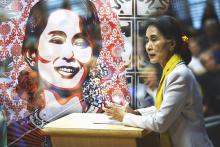
The 2014 election-year posturing forces me back to November, 2010, when a living parable walked into freedom after 15 years of house arrest. Aung San Suu Kyi, Burma/Myanmar's opposition leader, waved to her supporters and awakened our stagnant conscience.
Suu Kyi ranks among the elite of real-life parables. "I should be like them," we typically think. "Everyone should." They're the true norm. Saint Francis was one such parable. So was Gandhi. So were Mother Theresa, Nelson Mandela, and Alexsandr Solzhenitsyn. Pope Francis may be another. They shame our insipid, glitz-and-glitter leaders, whether they're overpaid CEOs or I'll-say-anything-to-get-votes candidates. They show us that politics is more than winning elections and business is more than making money.
In fact, they shame us all. We reward the attack ads. We elect the politicians and hire the CEOs. We diminish human beings to mere consumers and interest groups and file them into marketing categories. We breed our rant-and-rave culture and turn it loose.
During his 1930-31 fellowship at Union Theological Seminary in New York City, German theologian Dietrich Bonhoeffer joined his African American classmate Albert Fisher as a regular attendee at Abyssinian Baptist Church in Harlem.
WHEN BONHOEFFER entered Harlem with Fisher, he met a counternarrative to the white racist fiction of black subhumanity. The New Negro movement radically redefined the public and private characterization of black people. A seminal moment in African American history had arrived, and all of Bonhoeffer’s descriptions of his involvement in African American life during his Sloane Fellowship year occurred during this critical movement. He turned 25 that February. Bonhoeffer was experiencing that critical moment in African American history while he was still young and impressionable.
The New Negro, a book containing a collection of essays, was edited by one of the leading intellectual architects of the movement, Alain Locke. The New Negro, as Locke and his authors appropriated the term, described the embrace of a contradictory, assertive black self-image in Harlem to deflect the negative, dehumanizing historical depictions of black people. The New Negro made demands, not concessions: “demands for a new social order, demands that blacks fight back against terror and violence, demands that blacks reconsider new notions of beauty, demands that Africa be freed from the bonds of imperialism.” Bonhoeffer knew the movement by the descriptor New Negro, but James Weldon Johnson preferred to describe the movement as the Harlem Renaissance ... as a rebirth of black people rather than something completely new. ...
MARQUETTA L. GOODWINE, a computer scientist, mathematician, and community organizer, grew up on the Sea Islands off the coast of South Carolina. On July 2, 2000, Goodwine was “enstooled,” in a traditional African ceremony, as “Queen Quet,” political and spiritual leader of the Gullah/Geechee Nation that extends from coastal North Carolina to Jacksonville, Fla.
“A lot of people don’t know that we exist,” she told Sojourners. “People are unaware that there is a subgroup of the African-American community that’s an ethnic group unto itself, with nationhood status for itself.”
Queen Quet, and the Gullah/Geechee Sea Island Coalition she founded, are actively engaged in battling environmental racism and climate change. As a cultural leader of an Indigenous community, she works to preserve her people’s heritage in the land and stop corporate encroachment. As a spiritual leader of a people who practice a unique form of faith that adheres to Christian doctrine while being distinctly African, she nurtures her people’s tradition of communal prayer, song, and dance, as well as their connection to Praise Houses, the small places of worship built on plantations during slavery.
Sojourners contributing writer Onleilove Alston, lead organizer in Brooklyn for Faith in New York, a member of the PICO National Network, sat down with Queen Quet on St. Helena Island in Beaufort County, South Carolina, to learn more about the Gullah/Geechee people, their spirit, and their struggle for justice. —The Editors
THE GULLAH/GEECHEE PEOPLE are the descendants of African people that were enslaved on the Sea Islands. We are descendants of Igbo, Yoruba, Mende, Mandinka, Malinke, Gola, Ife, and other ethnic groups from the Windward Coast of Africa, as well as Angola and Madagascar.
We also have Indigenous American ancestry from the Cusabo, Yamasee, Cree, and Edistow, the original inhabitants of the land now held in the Gullah/Geechee Nation. A socio-anthropologist segregated us at one point, saying that Gullahs are on the South Carolina Sea Islands and Geechees are on the Georgia Sea Islands, but there is no difference between us. We are one people.
In 1999, I became the first Gullah/Geechee in history to speak before the United Nations. Now I am a member of the International Human Rights Association of American Minorities, an NGO with U.N. consultative status, and the International Human Rights Council (a coalition of human rights scholars and activists that works on key human rights issues).

SINCE HIS ELECTION as the 265th successor of St. Peter, Pope Francis has provided a refresher course on Catholic social teaching to the world’s 1.2 billion Catholics. “Catholic social teaching is no longer a secret,” says Jean Hill, director of peace and justice for the diocese of Salt Lake City. “Everything Pope Francis is saying comes from social doctrine and is about social justice.”
Through his various homilies, speeches, and meetings, Francis is “reading the signs of the times” and making practical application to the issues of the day. Some of his most powerful statements to date were made in his first pastoral document, “The Joy of the Gospel,” including this declaration: “I prefer a church which is bruised, hurting, and dirty because it has been out on the streets, rather than a church that is unhealthy from being confined and from clinging to its own security.”
Pope Francis is calling the faithful to be more merciful, compassionate, joyful, and centered upon the needs of the poor and vulnerable. He wants a church that sees the human person before the law and one that does not “obsess” about a narrow set of issues, but affirms both human life and human dignity. He invites Catholics to pray, reflect, and embrace the beauty and breadth of Catholic social teaching—a rich tradition that is predicated on the dignity of the human person.
The United States Conference of Catholic Bishops (USCCB) defines Catholic social teaching as “a central and essential element of our faith. Its roots are in the Hebrew prophets who announced God’s special love for the poor and called God’s people to a covenant of love and justice.” This teaching is also founded on the life and words of Jesus. It posits that “every human being is created in the image of God and redeemed by Jesus Christ, and therefore is invaluable and worthy of respect as a member of the human family.”
Indigenous American leaders speak out against the Washington NFL team’s mascot.

I'VE NEVER FELT as powerful and proud of my community as I was while walking down the middle of Franklin Avenue in Minneapolis on a cold evening in November with hundreds of other Native activists and allies. We were marching from the heart of the Minneapolis American Indian community to the Hubert H. Humphrey Metrodome to speak out against the Washington Redsk*ns mascot.
Hundreds of American Indians and allies rallied outside the Metrodome to demand that Dan Snyder, owner of the Washington professional football team, change the team’s name and mascot in spite of Snyder’s dissent. The owner’s unwavering commitment to keeping the Redsk*ns name became evident when earlier this year he stated, “We’ll never change the name. It’s simple. NEVER. You can use caps.”
Standing among supporters and friends, I looked on as the community joined together in drumming, dancing, and singing, with American Indian Movement co-founder Clyde Bellecourt serving as the rally’s emcee. Several local elected leaders addressed the crowd, including U.S. Rep. Betty McCollum, co-chair of the Congressional Native American Caucus, and the mayor-elect of Minneapolis, Betsy Hodges, days after winning her election for mayor. The two joined an avalanche of elected leaders calling on Snyder and NFL Commissioner Roger Goodell to change the team’s name.
More than 20 years prior, another protest had been held at the Metrodome for Super Bowl XXVI, a game between the Washington Redsk*ns and the Buffalo Bills. That protest included Clyde Bellecourt’s brother, Vernon, leading the charge with Sen. Paul Wellstone, a friend and champion of the American Indian community. Two decades later, the conversation has changed and momentum is on our side. Even President Barack Obama joined the cause in saying, “I’ve got to say, if I were the owner of the team and I knew that there was a name of my team—even if it had a storied history—that was offending a sizeable group of people, I’d think about changing it.”
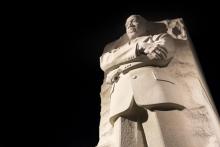
Are we waiting for another Dr. King? As I collect my thoughts to write these words, I’m mindful that I don’t honestly know what discrimination is. I have never (consciously) experienced discrimination because of my race, the color of my skin, or where I come from. I have never had to say, like Solomon Northup, “I don’t want to hear any more noise.” In the film, 12 Years a Slave, Solomon refers to the cry of those being beaten and separated from their children. I speak here with a profound sense of respect and fear. Who am I, or maybe even you who read, to speak about a tragedy and a pain that we have never experienced? I only speak out of a sense of duty and a calling from God.
Dr. King wrote, “So many of our forebears used to sing about freedom. And they dreamed of the day that they would be able to get out of the bosom of slavery, the long night of injustice … but so many died without having the dream fulfilled.” (A Knock at Midnight, p.194)
To this day, millions of African Americans in our country still dream about getting out of the bosom of slavery. Slavery today is masked behind the social, financial, political, and even religious systems that deny the dignity and full integration into these systems to people of color. Solomon Northup cries out in the film saying, “I don’t want to survive, I want to live.” The struggle of African Americans is a struggle to live. So far, they have only survived.
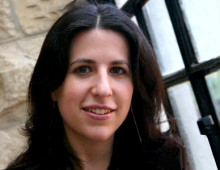
IN HER JEWISH school in Montreal, Ronit Avni learned the tragic history of her people. Her Canadian mother and Israeli father had met in the ’60s when her mother was living in Israel and working as a folk singer, often performing for Israeli troops. Her older sister was born in Tel Aviv, but the family settled back in Montreal in the mid-’70s before Ronit was born.
Not strictly religious but committed to the values of Judaism, Ronit couldn’t help but ask probing questions as she listened to the stories of the birth of the modern state of Israel in 1948. Am I hearing the whole story? How do Palestinian perspectives differ from what my educators and community leaders are teaching? How can we transform this situation from a zero-sum equation to one that respects the dignity and freedom of all?
Years later, having graduated with honors from Vassar College with a degree in political science after studying theater at a conservatory in Montreal, Ronit trained human rights advocates worldwide to produce videos as tools for public education and grassroots mobilizing.
By the time I met Ronit a few years ago, she had narrowed her worldwide focus to the Israeli-Palestinian conflict, where her heart was most deeply drawn. She is the founder and executive director of Just Vision, an organization dedicated to increasing media coverage and support for Palestinian and Israeli efforts to end the occupation and conflict without weapons of violence.
During the last several years, my engagement in the Holy Land has been significantly shaped by Ronit. Her film Encounter Point, about Israelis and Palestinians who have lost family members, land, or liberty to the conflict yet choose forgiveness and reconciliation rather than revenge, gave me hope that peace can emerge from pain.
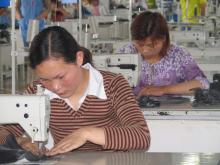
THE APRIL 24 collapse of a garment factory near Dhaka, Bangladesh, killed more than 1,125 people. That tragedy followed a fire that killed 112 last November at a factory making goods for companies including Walmart. According to the International Labor Rights Forum, at least 1,800 garment workers in Bangladesh have died in fires or other factory disasters since 2005. The collapse near Dhaka is the largest disaster in that time and the one that has gotten global attention.
As a Dominican Catholic sister and member of Catholic Scholars for Worker Justice, I approach reflection on such a disaster from the foundation of Catholic social teaching. Each of the social principles below relates to the situation in Bangladesh and challenges us to reflect on our own regard for those who provide our clothing.
- Life and dignity of the human person. Story after story of the people who work in the garment industry shows the lack of respect for workers. Long hours, few to no breaks, prevalent verbal, physical, and sexual abuse, and now the collapse of a factory—do we need any more proof that human life is held in so little regard? Many years ago, Cardinal Joseph Bernardin called for an understanding of “respect life” as inclusive of human life “from womb to tomb.” Our upholding of life must include working toward changing factory conditions so that a debacle such as Dhaka never happens again.
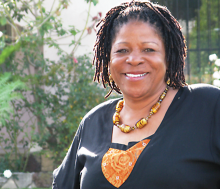
Bio: Founder of A New Way of Life Reentry Project in California, which has provided housing and support for more than 500 formerly incarcerated women. anewwayoflife.org
1. What motivated you to start A New Way of Life in 1998?
Through the kindness of a special person, I was able to access treatment services in Santa Monica [Calif.] after the sixth and final time I was released from prison. This was a new phenomenon for me. I am originally from South Los Angeles, and I was amazed that such resources were available in this more-affluent part of the city. I began to wonder why those same resources were not available in my home community—an area so heavily impacted by the “war on drugs.” I knew the need was desperate, and I wanted to bring those resources to South L.A. My work since then has been, and continues to be, a work of faith. I step out in faith, and God shows up.
I can’t think of a way that it’s good for anyone. The current system treats everyone inhumanely. It puts them into the category of slaves. It exploits their families. It kills their hopes and dreams. Our mission is to address the needs of people who have been negatively and cruelly treated by the criminal justice system and to restore their hopes and dreams by treating them with dignity and respect.
ETHICS ASKS the questions: What is right to do? How do we know? David P. Gushee puts the concept of the sacredness of human life at the center of his moral reasoning. A professor of Christian ethics at Mercer University in Atlanta, Gushee has given us a work that is an important milestone on the road of constructive Christian ethics.
In this book Gushee has set himself a large and ambitious goal. He writes, “I am proposing that, rightly understood, a moral norm called the sacredness of life should be central to the moral vision and practice of followers of Christ.”
He seeks to ground this moral norm in scriptural authority and in the Christian tradition at its best. His survey of scripture and of Christian history is truly impressive, considering most of the major elements of the Christian theological and ethical traditions, including the current thinking of liberation theology. He demonstrates knowledge of the feminist critique of scripture, and he at least mentions eco-feminism. The bibliography alone is worth the price of the book.
Moreover, Gushee also considers such important Enlightenment thinkers as John Locke and Immanuel Kant. He devotes a chapter each to German philosopher Friedrich Nietzsche and to the Nazi desecration of human life. There is much food for thought here.
For me, however, the book is primarily descriptive. And it does not provide an explanatory framework to help us understand why scripture and the Christian tradition have led the way in both the recognition of the sacredness of human life and in the violation of this holiness. It would have been helpful for Gushee to give us a brief discussion of Ernst Troeltsch, who in his two-volume The Social Teachings of the Christian Churches enables us to see that the line of demarcation between the church and the world is porous to the point that there is always interpenetration between the two. Church teachings leaven and flavor the moral thinking of the world outside its doors while the world’s often destructive ideologies come to church every Sunday and sit down on the front pew and sometimes preach from the pulpit.

EVERY TIME I fly into Ontario, Calif., I see neat blocks of gleaming, low-rise warehouses surrounded by well-manicured trees and shrubbery. I now know that what goes on inside those buildings is not nearly so pretty.
As a board member of People of Faith United for Worker Justice, a local faith-rooted worker justice organization, I have seen the dismal working conditions inside several of these warehouses and have heard the testimonies of workers who have been seriously injured on the job. Eighty-five percent of the warehouse workers in Southern California earn minimum wage and receive no health benefits, even though their jobs entail unloading and reloading heavy boxes.
Since many of these workers are hired through temp agencies, which are often located inside the warehouses, workers’ rights are routinely abused. When someone is injured, instead of being cared for, he or she is simply not called back to work the next day. When workers complain about poor working conditions—such as a lack of breaks, access to bathrooms, or having to lift heavy boxes into freight trucks in 108-degree temperatures—the managers tell them it’s not their responsibility because the workers are employed by the temp agency. The temp agencies in turn claim they are not responsible for conditions in the warehouses because the agencies are separate companies.
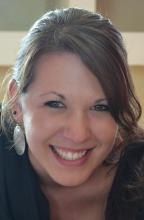
KRISTIN HART planned on moving to New York City to become an advertising agent with a sleek apartment and a stunning wardrobe. But one day all that changed. A humble missionary couple spoke at her church in Gainesville, Fla., about their experience fighting human trafficking in Asia, and after hearing the horrors of slavery, Hart knew she had to do something.
As she prepared to graduate from college in 2011, she applied for an internship with International Justice Mission (IJM), a Christian organization that rescues victims from trafficking and other violent oppression. A few months later, she found herself confronting the harshest cases of exploitation in south Asia.
“I saw people forced to work 18 hours a day, with their families taken from them,” Hart says. “I never imagined that humanity could be stripped from a person like that.”
WHEN A GROUP of refugees from Burma who attend my church in Melbourne, Australia, asked me to co-lead a study of the book of Revelation last year, at first I was apprehensive. After all, the book is strange and confusing. Many, including Martin Luther, have asked whether it’s even necessary to include it in the New Testament. But, as our group plunged into Revelation’s mysterious depths, I was to learn that, unlike Western Christians, praying refugees readily see its lessons about the powers of evil—social, political, spiritual, and personal—and the decisive struggle that the Son of God mounts against them.
The 18 young women and men in the study, who ranged from 16-to- 24-years old, were members of the Karen ethnic group. The civil war in their home region of Burma has, over decades, resulted in massive displacement and suffering. In recent years thousands of Karen people have resettled in the U.S. and other countries, including Australia. (Although current political developments in Burma raise cautious hope of eventual peace, at present fighting continues in Karen State and other areas inhabited by ethnic minorities.)
Leading the study of Revelation with me was Thara Nonoe, a Karen man in his mid-50s highly esteemed in the community for his skills in imparting knowledge and writing poetry. (“Thara,” which means “teacher,” is a Karen title of respect.) The young always listen to him keenly. Our six-part study was a segment of a two-year series of lay religious education. As I prepared, I was haunted by Peter’s sermon on the day of Pentecost: “In the last days, God declares, I will pour out my Spirit” (Acts 2:17). Pentecost signifies that the last days have arrived, in fulfillment of the words of the prophet Joel. In my mind, these words have particular reference to oppressed believers such as Christian refugees.
The spirit of the Lord set me down in the middle of a valley; it was full of bones. He led me all around them; there were very many lying in the valley, and they were very dry. —Ezekiel 37:1-2
IT IS A March morning in Guatemala City: sunny, cool, windy. I walk down a dry, dusty lane, out along a finger of land jutting perilously between ravine and ravine. To one side, vultures circle in lazy spirals on the updraft, watching everything down below—waiting. We are near the garbage dump and the slums that surround it. Here, on the road through La Verbena cemetery, hospital waste trucks rumble by; when they reach the end they tip their pile down into the valley.
I am early, so I walk slowly, kicking stones through the rows of niche tombs, stacked five high, artificial flowers drooping down. I pass some of the nicer mausoleums, and then I am among the graves in the scrub grass, markers tilted over or gone. Some are simple piles of dirt; others are human-sized hollows, where the bodies have been removed and dumped into the bone pits.
I stand outside a cement block wall, papered with the faces of the disappeared. A few young staff members arrive and wait as well, under pine trees that are blowing wildly now, this way and that. They eye me, but we say nothing.
The “disappeared” stare at me from the abyss of silence. Many are women, their hair and clothes out of style now. The men sport moustaches from the 1980s. I imagine each one grabbed by murderers, thrown into a van, driven somewhere dark, filthy, disgusting, sticky with blood, urine, and feces. The women are raped, the men too, and all of them mutilated, burned, or electrocuted, and finally killed. Some are then brought here and buried.